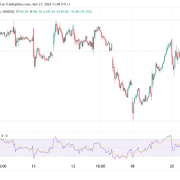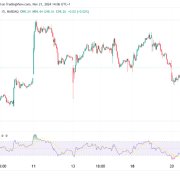
The Treasury’s inflation-linked savings bonds, known as I bonds, are anticipated to have a new interest rate set just above 3%, a decline from the previous semiannual rate of 4.28%, influenced by this year’s softer inflation metrics, according to estimates by Barron’s.
The new Treasury I bonds rate is expected to be set in the coming few days and apply to new purchases starting November 1.
“This new rate reflects both the consumer price index (CPI) stability and the Treasury’s updated calculations based on recent inflation data,” the publication reported.
Rate influenced by cooling inflation
The latest rate adjustment is derived from the US CPI from March to September 2024, along with a fixed component of 1.3% that remains stable for the bond’s duration.
Factoring in current data, Barron’s projects an annualized inflation-linked rate at around 1.9%.
With the fixed rate of 1.3%, this brings the upcoming I bond rate to approximately 3.2%.
This adjustment marks the I bonds’ lowest rate since 2021, reflecting cooling inflation.
While inflation surged to 9.6% in 2022, triggering a peak in I bond demand, 2024’s steadier consumer price gains have resulted in this significant rate drop.
Lower rates could impact I bond demand
During inflationary spikes in 2022, I bonds became a popular choice among investors seeking to hedge against price increases, and demand surged at the peak 9.6% rate.
However, with current short-term interest rates nearing 5%, alternatives like Treasury bills and money-market funds have drawn investor attention, adding competition to I bonds as they lose some of their prior yield appeal.
The upcoming rate applies to all I bonds purchased starting November 1, and, like all I bonds, it will adjust every six months based on CPI changes.
Investors also retain the flexibility of redeeming bonds after a year, albeit with a three-month interest penalty if cashed in within the first five years.
Tax and compounding advantages keep I bonds appealing
Despite the drop in rate, I bonds offer distinct tax advantages and compounding interest on their principal value, which adds to their appeal.
Unlike typical Treasury notes, I bonds compound semiannually, reducing reinvestment risks.
Tax on interest is deferred until the bonds are redeemed, a benefit that offers I bonds a feature similar to an individual retirement account.
Moreover, I bond interest is exempt from state and local taxes, making them more tax-advantageous than many traditional savings products.
As November approaches, investors will be able to purchase the new I bonds through TreasuryDirect, with an annual cap of $10,000 per individual, although structured business partnerships may allow for increased purchases.
The post Treasury I bond rate expected to drop to 3%, reflecting cooler inflation appeared first on Invezz











